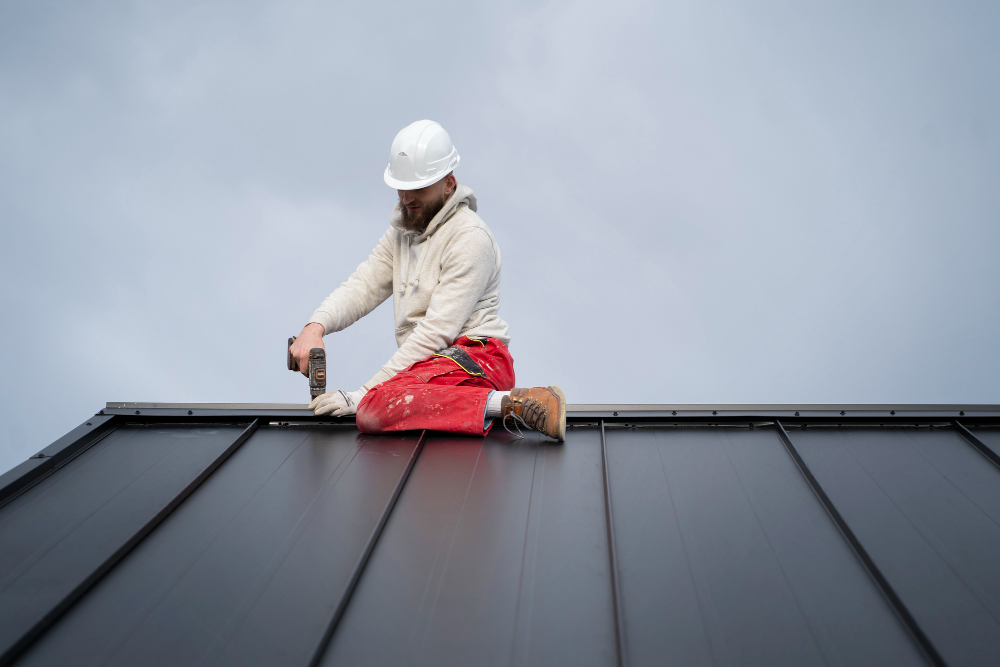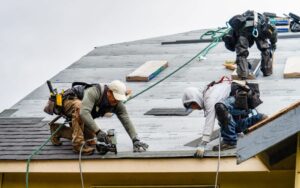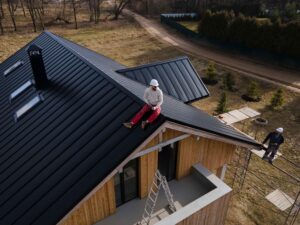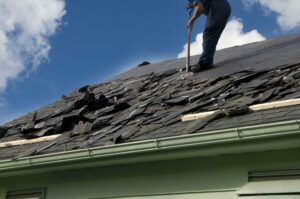Roof recovery means adding a new layer of roofing materials over your existing roof, extending its lifespan at a lower upfront cost. In contrast, roof replacement involves removing the entire roofing system and installing a new one. Recovery can be a cost-effective solution, but it may only address surface issues, while replacement tackles underlying problems directly. Consider your roof’s condition, budget, and long-term goals to make the best choice. Explore more about the implications of each option.
Understanding Roof Recovery
When considering roof maintenance options, understanding roof recovery can save you time and money. Roof recovery involves installing a new layer of roofing materials over the existing roof, effectively extending its life without the need for complete replacement. This process typically uses compatible roof materials, such as TPO or EPDM, which can enhance energy efficiency and reduce waste. A thorough cost analysis is essential, as roof recovery generally offers a more affordable solution compared to replacement. By evaluating your current roof’s condition, you can determine if recovery is viable, minimizing disruption while optimizing your investment. It’s important to consult with a professional to guarantee you select the right materials and techniques for your specific roofing needs.
Exploring Roof Replacement
While roof recovery can be a cost-effective option, there are times when roof replacement becomes necessary for the long-term health of your building. If your roof shows significant damage, frequent leaks, or aging beyond its lifespan, replacement is the best solution. You’ll need to evaluate various roof materials, such as asphalt shingles, metal, or tile, each offering different durability and aesthetic options. Conducting a thorough cost analysis is essential, as it helps you weigh the upfront investment against potential long-term savings from reduced maintenance and energy efficiency. Ultimately, investing in a roof replacement can enhance your property’s value and safety, ensuring it withstands the elements for years to come.
Pros and Cons of Roof Recovery
Although roof recovery can seem appealing due to its lower upfront costs, it’s important to weigh both its advantages and drawbacks. One of the key benefits is cost efficiency; you save money compared to a complete roof replacement. This process allows you to install a new layer over existing roofing, minimizing labor and disposal fees. However, you should consider material durability. If your current roof has underlying issues, recovery might mask problems rather than resolve them, potentially leading to higher costs down the line. Additionally, recovery may limit future options, as some materials can’t support additional layers. As a result, evaluating your roof’s condition is essential to determine if recovery is a smart choice for your situation.
Pros and Cons of Roof Replacement
Roof replacement offers an extensive solution to addressing underlying issues, ensuring the long-term integrity of your home. One major advantage is the long-term durability it provides, as new materials can greatly extend your roof’s lifespan. However, you’ll need to evaluate the cost implications; replacement can be a substantial investment compared to recovery options.
Additionally, a full replacement allows you to upgrade to more advanced roofing materials, improving energy efficiency and aesthetics. On the downside, the process can be time-consuming and may disrupt your daily routine. You might also face unexpected expenses if underlying problems are discovered during the replacement. Ultimately, weighing these pros and cons will help you make an informed decision about your roofing needs.
Factors to Consider When Choosing Between the Two
When deciding between roof recovery and replacement, it’s essential to assess several key factors that can greatly impact your choice. First, consider the cost considerations; roof recovery typically costs less upfront than a full replacement, which can be appealing if you’re on a tight budget. However, factor in potential long-term expenses, as recovery may not last as long as a new roof. Longevity factors also play a significant role; if your existing roof has extensive damage or multiple layers, replacement might be the smarter investment for durability and peace of mind. Ultimately, evaluating your roof’s condition, budget, and long-term goals will help you make an informed decision that aligns with your needs.
Roofing
roof
What is the difference between roof recovery and roof replacement?
between roof recovery
roof replacement
roof recovery
improper roof recovery
roof covering
roof deck
roofing shingles
roof shingles
shingle roof
roof coating
standing-seam metal roof
asphalt shingles
insulation
roof recovery
complete roof replacement
full roof replacement
roof isn
roof recovery project
roof recovery project
roof repair option
roof repair option
right roof repair
roof restoration
roof recovery meet
roof recovery meet
roof repairs
separate roofing systems
roof fix
total roof overhaul
additional roofing
additional roofing
roof system
roof system
roof system
roof system
roof removal
new roofing
additional roof
roof recovering
roof recovering
roof repair project
roof repair job
roofing needs
single-ply roof recovery
underlying roof
new roof system
new roof system
roof systems
roof problems
upgraded roof
roof coverings
new roof yields
new roof covering
roof jacks
adhered roof systems
roof coverings present
single-ply roof recoveries
roofing project
multiple roofing contractors
higher-end roofing shingles
commercial roofing
qualified roofing
roofing contractors
roofing materials
roof manufacturers
local roofing company
old roof materials
old roof shingles
single-ply roof
single-ply roof
single-ply roof
proper roof inspection
asphalt shingle roof
saturated roof
r-value roof system
complete roof inspection
roof applicator
full roof leak
knowledgeable roofing
steep slope roof
low slope roofs
quality shingles
new shingles
new shingles
worn shingles
old shingles
soggy shingles
building maintenance
structural deck
structural deck
structural decking
new shingle overlay
shingle manufacturer
uplift
deck





